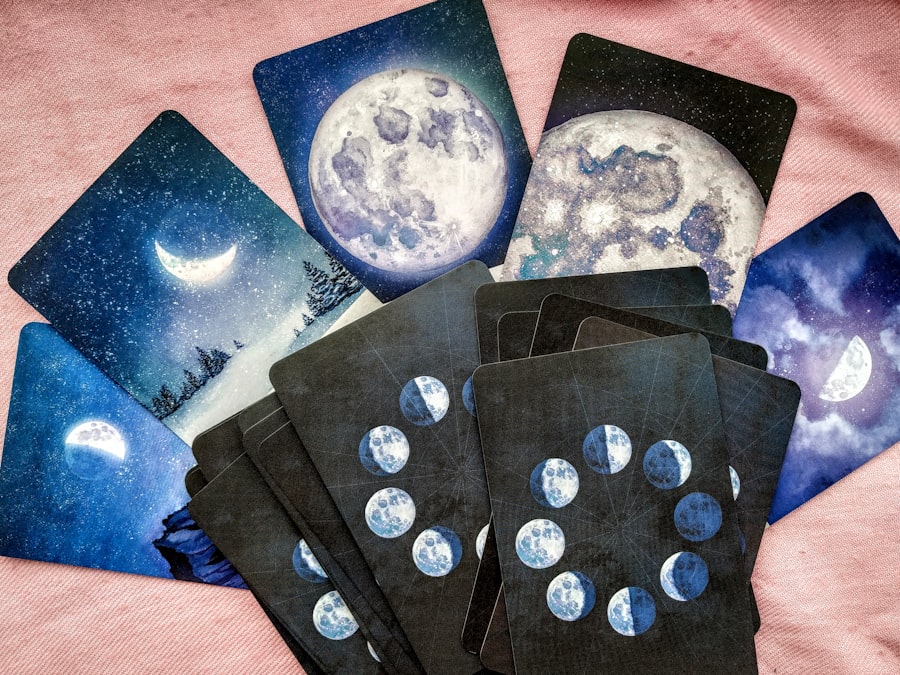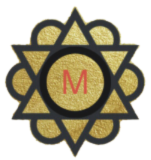
Tarot is a fascinating system of divination that has captivated individuals for centuries. At its core, a tarot deck consists of 78 cards, divided into two main sections: the Major Arcana and the Minor Arcana. The Major Arcana comprises 22 cards that represent significant life events, spiritual lessons, and archetypal themes.
Each card, from The Fool to The World, carries profound symbolism and meaning, often reflecting the journey of the self through various stages of growth and transformation. The Minor Arcana, on the other hand, consists of 56 cards divided into four suits: Cups, Pentacles, Swords, and Wands. Each suit corresponds to different aspects of life—emotions, material concerns, intellect, and creativity, respectively.
Understanding tarot requires more than just memorizing card meanings; it involves grasping the intricate relationships between the cards and how they interact within a reading. Each card can take on different meanings depending on its position in a spread and the context of the question posed. For instance, The Tower card, often associated with upheaval and chaos, can signify a necessary breakdown leading to renewal when paired with The Star, which symbolizes hope and healing.
This dynamic interplay is what makes tarot a rich tool for introspection and guidance.
Key Takeaways
- Tarot is a tool for self-reflection and insight, using a deck of cards with symbolic imagery.
- When choosing a tarot deck, consider the imagery, symbolism, and personal connection to the cards.
- When conducting tarot readings for friends, create a comfortable and safe space for open communication.
- Use tarot as a tool for deepening communication and connection with friends, allowing for meaningful conversations.
- Nurturing friendships through tarot practices involves mutual respect, empathy, and understanding of each other’s boundaries and consent.
Choosing the Right Tarot Deck
Selecting a tarot deck is a deeply personal endeavor that can significantly influence one’s experience with the cards. With countless decks available, each featuring unique artwork and interpretations, it is essential to choose one that resonates with your aesthetic preferences and spiritual inclinations. Some individuals may be drawn to traditional decks like the Rider-Waite-Smith, known for its iconic imagery and straightforward symbolism.
Others might prefer more contemporary or themed decks that align with their interests, such as decks inspired by mythology, nature, or pop culture. When choosing a deck, consider not only the visual appeal but also the accompanying guidebook or resources available. A well-written guidebook can provide valuable insights into the meanings of the cards and offer suggestions for spreads and interpretations.
Additionally, some decks come with additional tools such as crystals or affirmation cards that can enhance the reading experience. It’s also worth noting that many tarot practitioners recommend handling a deck before purchasing it; this tactile connection can help determine if the energy of the deck aligns with your own. Ultimately, the right tarot deck should feel like an extension of yourself, inviting you to explore its depths and engage in meaningful readings.
Conducting Tarot Readings for Friends

Conducting tarot readings for friends can be an enriching experience that fosters deeper connections and understanding. When approaching a reading for someone close to you, it’s essential to create a comfortable environment where they feel safe to explore their thoughts and emotions.
Before beginning the reading, it’s beneficial to have an open conversation about their intentions and what they hope to gain from the session. This dialogue not only clarifies their expectations but also allows you to tailor the reading to their specific needs. During the reading itself, it’s crucial to maintain an open mind and avoid projecting your interpretations onto your friend’s situation.
Instead of offering definitive answers, consider framing your insights as possibilities or reflections that encourage them to think critically about their circumstances. For example, if The Lovers card appears in a reading focused on relationships, you might discuss themes of choice and harmony rather than simply interpreting it as a sign of romantic love. This approach empowers your friend to engage with the cards actively and derive their own meanings from the symbols presented.
Additionally, be prepared for emotional responses; tarot can evoke powerful feelings, and being supportive during these moments is vital for nurturing trust in your friendship.
Using Tarot for Communication and Connection
Tarot can serve as a powerful tool for enhancing communication and connection between friends. By using the cards as a medium for dialogue, individuals can explore complex emotions or unresolved issues in a non-confrontational manner. For instance, if there has been tension between friends due to misunderstandings or unspoken feelings, a tarot reading can provide a structured way to address these concerns.
By drawing cards related to each person’s perspective or feelings about the situation, both parties can gain insights into their motivations and fears. Moreover, incorporating tarot into regular check-ins or gatherings can foster deeper connections over time. Friends might establish a ritual where they draw cards together at the beginning of each month to set intentions or reflect on their personal journeys.
This practice not only encourages accountability but also creates a shared language through which friends can discuss their experiences and aspirations. By framing conversations around the symbolism of the cards drawn, individuals can express themselves more freely and authentically, leading to richer interactions and stronger bonds.
Nurturing Friendships through Tarot Practices
Engaging in tarot practices together can significantly nurture friendships by creating shared experiences that deepen emotional ties. One way to do this is by hosting tarot nights where friends gather to read for one another or explore different spreads collectively. These gatherings can be infused with creativity by incorporating themed snacks or drinks that resonate with the cards being explored.
For example, if The Empress card is drawn frequently during a session focused on abundance and creativity, friends might enjoy herbal teas or pastries that symbolize fertility and growth. Additionally, friends can create personalized tarot journals where they document their readings and reflections over time. This practice not only serves as a record of their journeys but also allows them to track patterns in their lives and friendships.
By revisiting past readings together, friends can celebrate growth or identify recurring themes that may need attention. This collaborative approach fosters an environment of support and encouragement as individuals navigate their personal challenges while feeling connected through shared experiences.
Respecting Boundaries and Consent in Tarot Readings

While tarot can be an insightful tool for exploration and connection, it is imperative to approach readings with respect for boundaries and consent. Before conducting a reading for someone else, always seek explicit permission; this ensures that they are open to receiving insights from the cards and are prepared for any emotional responses that may arise during the session. Consent is not just about asking permission; it also involves being attuned to your friend’s comfort levels throughout the reading process.
If they seem hesitant or uncomfortable with certain topics or interpretations, it’s essential to pivot away from those areas. Moreover, it’s crucial to recognize that tarot readings should never be used as a substitute for professional advice or therapy. While tarot can provide valuable insights into personal situations, it is not equipped to address mental health issues or crises comprehensively.
If a friend expresses concerns that go beyond what tarot can address—such as anxiety or depression—it is vital to encourage them to seek help from qualified professionals. By maintaining clear boundaries around what tarot can offer while respecting your friend’s emotional landscape, you create a safe space for exploration without overstepping limits or causing harm. In summary, engaging with tarot offers numerous opportunities for personal growth and connection among friends.
By understanding its basics, choosing the right deck, conducting thoughtful readings, fostering communication through shared practices, nurturing friendships through collaborative rituals, and respecting boundaries throughout the process, individuals can create meaningful experiences that enrich their relationships while exploring the depths of their inner worlds together.
If you’re interested in delving deeper into the world of tarot, you may want to check out this insightful article on The Tarot Card Fool: Embracing New Beginnings and the Unknown. This article explores the symbolism and meaning behind the Fool card in tarot readings, offering valuable insights into embracing change and taking risks. Understanding the deeper meanings of tarot cards like the Fool can help deepen your friendships and relationships by providing a new perspective on life’s challenges and opportunities.
FAQs
What is Tarot?
Tarot is a form of divination that uses a deck of cards to gain insight into past, present, and future events, as well as to explore spiritual and psychological aspects of the self.
How can Tarot be used to deepen friendships?
Tarot can be used to deepen friendships by providing a tool for meaningful conversations, deepening understanding of each other’s perspectives, and fostering empathy and support.
Is it necessary to be an expert in Tarot to use it for deepening friendships?
No, it is not necessary to be an expert in Tarot to use it for deepening friendships. Simply having a basic understanding of the cards and their meanings can be enough to facilitate meaningful conversations and connections.
What are some ways to incorporate Tarot into friendships?
Some ways to incorporate Tarot into friendships include doing Tarot readings for each other, discussing the meanings of specific cards, and using the cards as prompts for deep conversations.
Can Tarot readings be used to resolve conflicts in friendships?
Tarot readings can be used as a tool to gain insight into conflicts in friendships, but it is important to approach the readings with an open mind and use the information gained from the cards as a starting point for open and honest communication.






